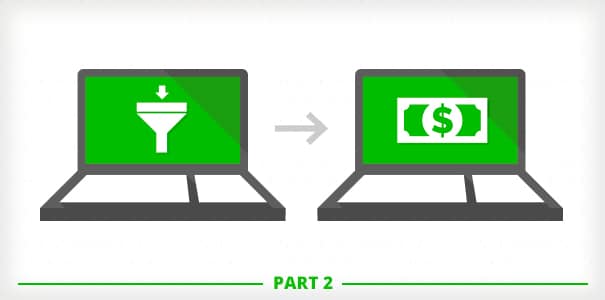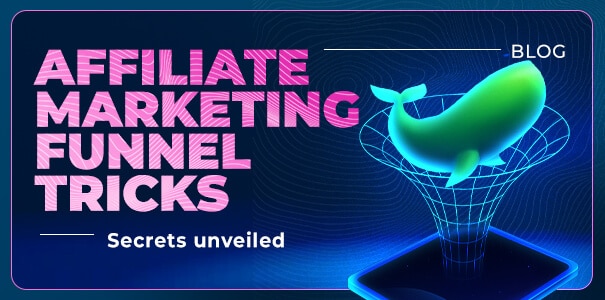
In our last post, How to Make a Dedicated Landing Page - Part 1, we talked about the main components every landing page should have.
However, much like having all the ingredients to something and not having a recipe to follow, you won’t get very far with your landing page if you don’t know how to put all these components together.
With that in mind, we thought it’d be helpful to provide you with greater insight on the two most important parts of your landing — the title and the call-to-action — two elements that can make all the difference between an awesome conversion ratio and a poor one.
“Spend 50% of your time on the page headline and the rest on what your CTA says.” ~ Michael Aagaard Passe
So, let’s talk a little bit more about how we do this.
Create a KICK-ASS Title!
Give it all your might.
It’s not everyone who can write amazing, attention-grabbing titles without a good amount of effort.
Indeed, the art of writing winning, eye-catching titles has been the source of extensive marketing research.
It’s a science!
Even the slightest title modification or alteration can make a difference in user behavior.
And if you’re ever unlucky enough to experience writer’s block, thankfully, there are proven formulas you can follow when it comes to your landing pages.
The “Magic” Copywriting Formulas for Writing Better Titles
- Formula 1: The Only Way to [Do Something Desirable] Without [Doing Something Undesirable]
- Example: The Only Way to Get Laid Without Getting Out of Bed
- Formula 2: [Do Something Hard] in [Period of Time] or [Promise]
- Example: Bang a Girl in the First Month or Your Subscription is Free
- Formula 3: [Do Something Desirable] Like [an Expert] Without [Something Expected & Undesirable]
- Example: Attract Girls like a Movie Star – Without Any of the Crazy!
Even if by following these formulas you’re already seeing more conversions, that doesn’t mean you should get cozy and attached to any one title formula and use nothing but that.
No, far from it!
We all know the great benefits to A/B testing and seeing how things constantly compare.
Don’t be afraid to A/B test a winning title.
Draw in Conversions with the PERFECT Call-to-Action
OK, so you’ve got the perfect title down pat.
Now it’s time to take a closer look at what will really be helping you get those conversions—and that boils down to your Call-to-Action (CTA).
Yep, by now, you should be very familiar and aware of the CTA’s importance after our last post.
Very few words... yet so very powerful
No matter what CTA you decide to go with, your Call-to-Action must answer these two questions:
- What motivates the user to click on it?
- What will the user get -- or hope to get -- after he clicks on it?
The value and the relevance of the message conveyed through your CTA must absolutely be spot-on.
Not conveying your CTA message clearly enough with the right wording can lead to misinterpretation—and loss of conversions.
There’s no way around it: your visitor needs to think, feel, and BELIEVE clicking that button or text containing the CTA makes the most sense to what they want to do next (whether that’s ‘reading more’, ‘creating their account’, etc.).
Again, even the slightest change to your CTA copy can lead to massive decline when it comes to your conversion ratio.
For example:
Mr. Michael Aagaard—the gentleman we quoted earlier—saw a 38.26% increase in his conversions when he altered just ONE word of his Call-to-Action.
This 38.26% increase of Aagaard's can be attributed to changing his CTA button text from “Order information” to “Get information”.
You see, he put greater emphasis on the user’s potential gain over anything else.
Aagaard goes on to say, “the answer lies in the messaging. ‘Order’ emphasizes what you have to do – not what you’re going to receive. Whereas “Get” emphasizes what you’re going to receive – rather than what you have to do to get it.”
His new-and-improved CTA conveyed greater value to the user - which is probably why more people clicked.
In his always insightful and numerous case studies, Mr. Aagaard reminds us of the huge importance of A-B testing strikingly similar CTAs on the same landing page to get the most out of your conversions.
Indeed, we can never assume to know our traffic’s reaction and perception to any given Call-to-Action, until well, we have the data in front of us letting us know whether they did or did not take action to said CTA.
Design the Layout with Care
After various split tests, you should finally have the perfect copy for your Call-to-action.
But that doesn’t mean you’re in the clear just yet — you’re still far from the perfect CTA from a design sense.
The design of your CTA must be chosen with care.
The most important design element to keep in mind is ensuring that your CTA stands out from the rest of your page.
You want it to catch the eye of your visitor.
Here are a few CTA design principles you should respect:
Encapsulation
Encapsulation is a classic technique which uses the tunnel effect to steer the user’s eye towards the CTA.
Your CTA location must make sense in relation to the rest of your landing page (which we remind you serves to convince your visitor).
Therefore, it doesn’t mean that the location of your CTA must always be above the fold—especially if the “user benefits” aren’t conveyed right next to it.
Color and Contrast
If you want your CTA to really “pop”, you may have to play with the colors a bit.
Does it contrast nicely with the background?
There have been numerous studies on this and the Call-to-Action buttons that received the most clicks have been Red, Green, Orange and Yellow.
Aside from these colors being brighter than most of their color counterparts—and aside from them contrasting nicely with most backgrounds—it’s no secret why these are the go-to CTA color picks.
These colors have a tendency to invoke anything from a sense of urgency (Red) to a "Let’s Go!" (Green) mentality.
Directional Cues
It doesn't hurt any to go the extra mile by drawing greater attention to your CTA by using classic graphic elements, such as arrows.
You can also follow Fitts's law of Ergonomics which suggests the bigger the target is... and the closer it is—the easier it is to reach. (But before going all out and blowing up your CTA to epic proportions, make sure you’re A/B testing to find that perfect size!)
Give your CTA some breathing room!
Finally, it’s essential to leave enough space around your CTA to facilitate the steering of the eye towards it.
Proper spacing around your Call-to-Action is a key component to a clean design.
Start Building Your New Campaign & Landing Page
Building a great landing is definitely an art that one needs to master to generate conversions.
It not only involves a great sense of creativity, but a strong understanding of the key elements that make a successful landing page effective.
And remember, even the best of landings can benefit from regular optimization.
Because as soon as your visitor knows the best way to get the most out of something they’re interested in thanks to your killer landing—beautiful things start to happen!



